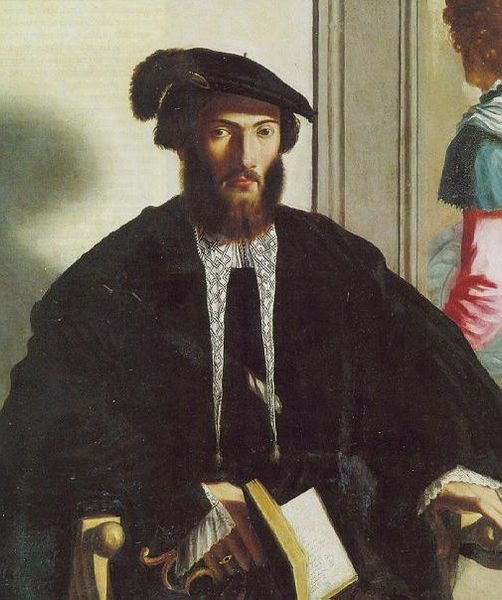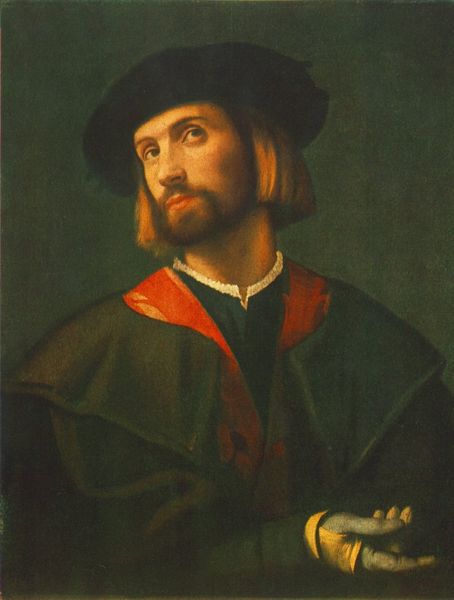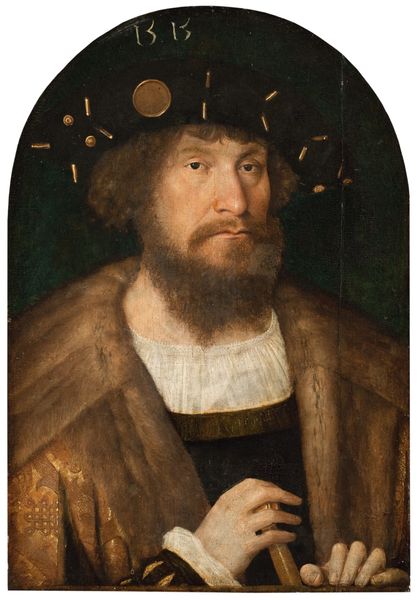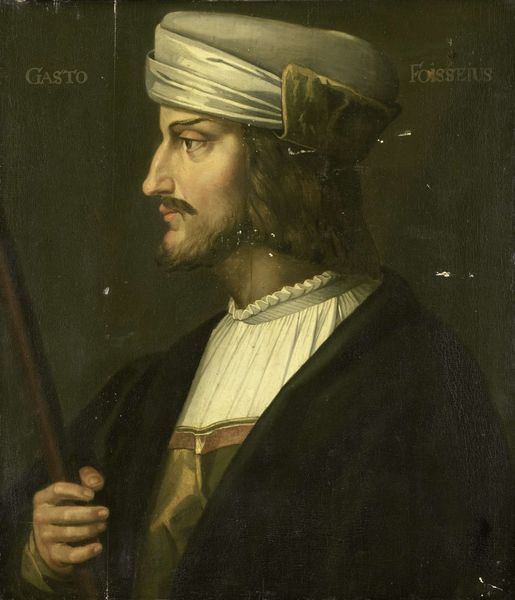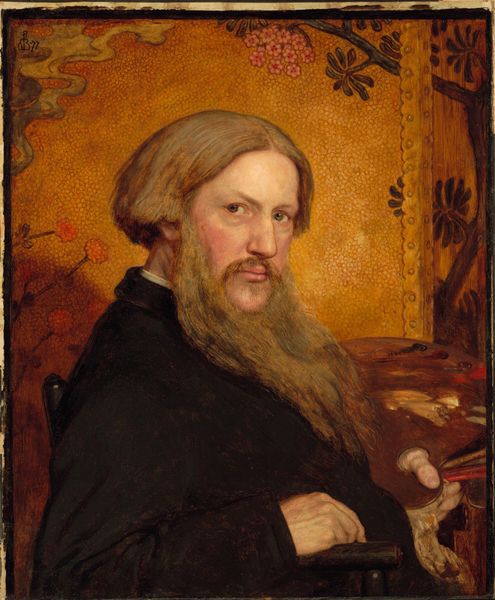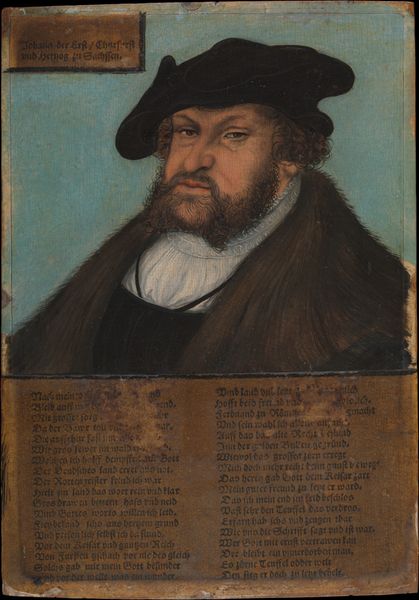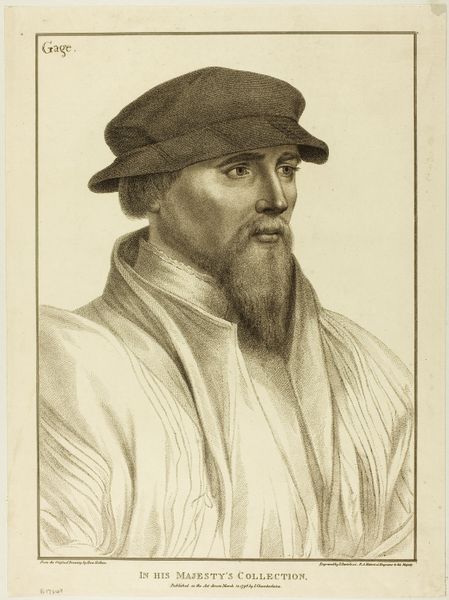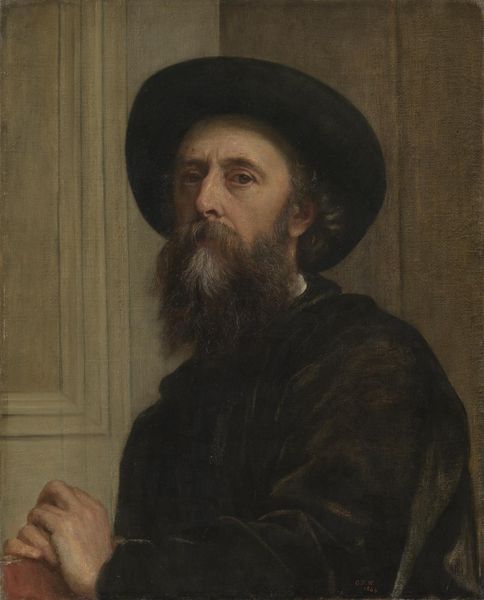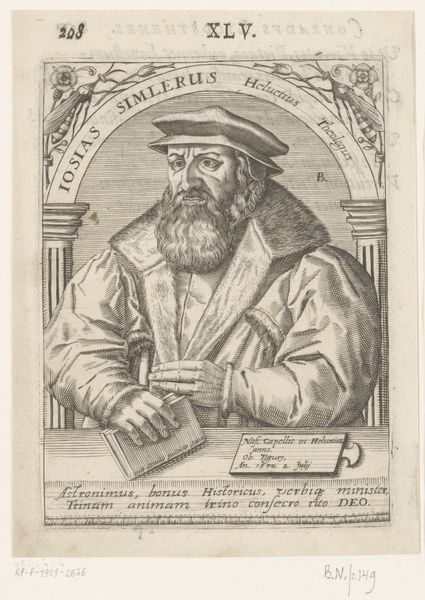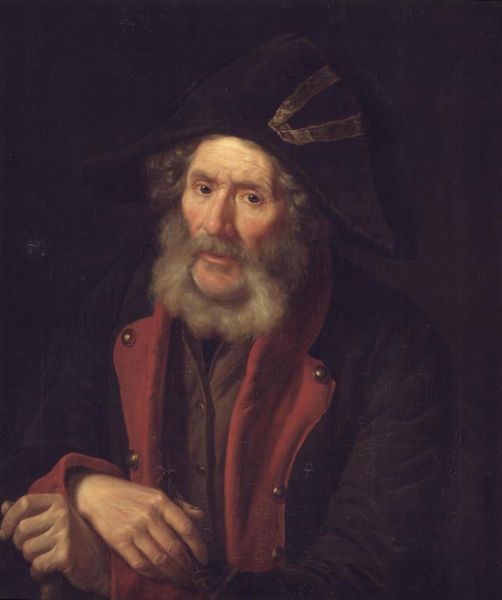
Portrait of Bonifacius Amerbach 1519
0:00
0:00
hansholbeintheyounger
Kunstmuseum Basel, Basel, Switzerland
painting, oil-paint
#
portrait
#
painting
#
oil-paint
#
history-painting
#
italian-renaissance
#
realism
Dimensions: 28.5 x 27.4 cm
Copyright: Public domain
Curator: Here we have Hans Holbein the Younger's "Portrait of Bonifacius Amerbach," dating back to 1519. It’s currently housed at the Kunstmuseum Basel. Editor: My immediate thought is that this is incredibly crisp! There's a stillness, a certain tangible quality to the textures and the fabrics in his clothing. It makes you wonder about the production of paint at this time. Curator: Absolutely. Holbein’s technique in using oil paint really lends itself to the almost photographic detail, despite being from the Italian Renaissance. Look at the textures he creates with layering, the sheer artistry in representing the various materials—the rougher woolen cloth versus the smoothness of his skin. Also, considering the subject was a prominent lawyer and humanist, it reflects on the elite consumption and status of possessing portraits, an act that declared one’s socio-political influence and wealth at the time. Editor: That is a sharp insight! The positioning alongside the inscribed tablet makes me wonder about the visual message conveyed in that context. The humanist circle valued intellect, so this could be interpreted as linking Amerbach to learning and art production as a sort of validation? I find the use of the naturalistic background particularly interesting; branches frame the figure. It contrasts the hard lines of the inscription. What does it signal, I wonder? Curator: You're spot on! The inscription plaque and the natural setting certainly play a part. Note how these devices operate in tandem—one solidifies status through text, echoing humanism's obsession with knowledge, while the foliage nods to nature as the origin of artistry. Consider the economic forces supporting these humanist projects; Amerbach likely commissioned this portrait, enabling Holbein’s artistry and participating in this humanist moment. The socio-economic dynamic cannot be overlooked, which gives insight into patronage systems and the financial support structures fueling art in 16th century Basel. Editor: Right, because a portrait like this also shapes public memory. It tells us what this elite group wanted posterity to remember about them—refined intellect, certainly. Well, this analysis definitely sharpened my perception of how process intersects social function! Curator: Likewise, I'll walk away pondering how art is deliberately framed within society and continues to echo the politics of imagery today.
Comments
No comments
Be the first to comment and join the conversation on the ultimate creative platform.
